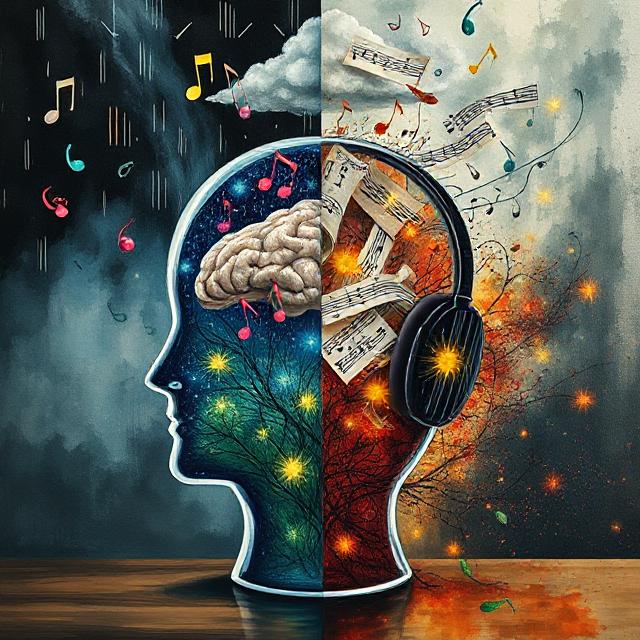
Table of Contents
How Ambient Sound Affects Cognitive Absorption
Studying isn’t just about time spent—it’s about depth entered. And one often-overlooked key to deeper learning is the sound environment in which it happens. Whether you’re grinding through textbooks or entering flow during creative problem-solving, the ambient soundscape around you can profoundly influence your cognitive absorption—the degree to which information embeds itself into memory and understanding.
This article dives deep into the neuroscience of sound and attention. We’ll explore how background noise, music, white noise, and nature sounds can either boost or break your study flow—and how to structure your auditory environment to optimize focus, memory, and learning speed.
What Is Ambient Sound?
Ambient sound refers to the background audio environment present during your study session—whether intentional (like lo-fi music) or unintentional (like traffic or a humming appliance).
Types of ambient sound include:
- White/pink/brown noise (static frequencies)
- Nature sounds (rain, waves, forest)
- Instrumental music (classical, lo-fi, ambient)
- Vocal music (lyrics in any language)
- Environmental noise (cafés, fans, neighbors)
Each has distinct effects on attention, working memory, and even emotional tone, all of which modulate cognitive absorption.
How Sound Interacts with Brainwaves
Your brain responds to sound electrically and emotionally. Ambient sounds influence brainwave states by modulating arousal levels (alertness) and cognitive load (task interference).
| Sound Type | Common Brainwave Response | Effect on Learning |
|---|---|---|
| Silence | Alpha (8–12 Hz) | Calm, ideal for internal focus |
| White Noise | Low Beta (12–15 Hz) | Improves attention by masking distractions |
| Nature Sounds | Alpha/Theta | Boosts relaxation & memory |
| Instrumental Music | Alpha/Beta | Enhances flow if tempo matches task |
| Music with Lyrics | Beta/Gamma (distractive) | Hinders reading, memory encoding |
| Chaotic Noise | High Beta/Gamma | Increases cortisol and cognitive fatigue |
The brain needs just enough stimulation to avoid boredom, but not so much that it fragments attention.
The Neuroscience of Ambient Sound and Learning
1. Noise and Attention Control
Studies show that moderate, steady ambient noise (like white or pink noise) can improve focus in individuals prone to distraction. This is called stochastic resonance—a phenomenon where a bit of noise boosts signal processing in the brain.
Study: Söderlund et al. (2007) found that white noise improved memory and reading comprehension in children with attention deficits.
2. Music and Memory Encoding
Music without lyrics can enhance learning—if tempo, complexity, and volume are well matched.
- Baroque music (60–80 bpm) has been shown to enhance reading comprehension and retention.
- Lo-fi hip hop helps sustain attention and reduce anxiety during repetitive study tasks.
Study: Hallam, Price, & Katsarou (2002) found that instrumental music improved spatial-temporal reasoning and verbal learning.
3. Lyrics Interfere with Language Tasks
Music with lyrics competes with the language centers of the brain (Broca’s and Wernicke’s areas). If you’re reading, writing, or studying language, lyrical music can decrease comprehension and recall.
Neuroscience Insight: The brain struggles with dual language streams—input from the page and from the song.
4. Nature Sounds Calm the Default Mode Network
Background nature sounds have been shown to reduce stress and increase working memory performance, especially during breaks or lighter tasks.
Study: Annerstedt et al. (2013) demonstrated that natural soundscapes reduced sympathetic nervous system activity, promoting cognitive recovery.
Choosing the Right Sound for Your Study Goal
| Study Task | Best Ambient Sound | Why |
|---|---|---|
| Memorization | Baroque or white noise | Steady tempo aids encoding |
| Reading | Silence or nature | Reduces competition with language |
| Creative Writing | Lo-fi or ambient music | Stimulates flow without overload |
| Math & Logic | White/pink noise | Enhances working memory focus |
| Mind Mapping | Theta-range music | Encourages associative thinking |
| Flashcards | Nature or silence | Supports reflection and active recall |
Sound, Emotion, and Learning Depth
Your emotional state directly affects how well you encode and store information. Calm, slightly uplifted emotional tones (like those induced by ambient nature sounds or mellow music) increase dopamine, a neurotransmitter essential for learning.
Calm sound = calmer mind = deeper absorption.
Stressful or loud environments trigger cortisol spikes, which impair hippocampal function—the very center of long-term memory formation.
How to Craft Your Ideal Sound Environment
- Use High-Quality Headphones
- Block external noise (passive or active noise cancellation)
- Deliver full frequency range for brainwave entrainment tracks
- Match Tempo to Task
- Slow tempo (60–80 bpm) for deep work
- Mid tempo (90–110 bpm) for energy or repetition tasks
- Experiment with Brainwave Audio
- Alpha-range (8–12 Hz) for calm focus
- Beta-range (14–18 Hz) for alert problem-solving
- Theta-range (4–7 Hz) for associative creativity
- Control the Volume
- Ideal ambient sound volume: 50–65 dB
- Louder than this increases fatigue and reduces retention
- Alternate Sound States
- 25 mins with sound → 5 mins in silence
- Let your brain reset baseline between sessions
Where to Find Ambient Sound Resources
- 🎶 Brain.fm: AI-generated focus music tailored to brainwave states
- Noisli: Customizable ambient noise combinations (rain, wind, etc.)
- Endel: Personalized sound environments for focus or relaxation
- YouTube & Spotify: Search “lo-fi for studying,” “white noise,” or “binaural beats for focus”
Final Reflection: Your Brain, Tuned by Sound
We live in an age of information overload—and sound is both one of the biggest distractions and most powerful tools for regulation. Mastering your ambient soundscape is not just about reducing noise—it’s about sculpting the atmosphere of absorption.
Don’t fight your environment. Design it.
Don’t chase focus. Tune your attention.
Don’t drown in silence or noise. Find resonance.
Sound, when used deliberately, becomes a cognitive amplifier. Pair it with light, timing, hydration, and rhythm—and you have a neuroscience-backed study environment optimized for real learning.
